As many of you know, I do programs with snakes and receive a lot of calls about them. But in recent weeks I have seen an increase in the number of calls and the number of encounters inside of homes. Though most of the home invasions have been in the garage, one found a gray rat snake in the cushions of her couch. In addition to the home invasion calls I have also seen an increase with venomous snake encounters and thought I would write about the possible reasons for this increase.

Of the 48 species of snakes found in Florida, 40 are found in the western panhandle – where I live. I decided to try a snake watch where they public would report what snakes they were seeing and what time of year. As of September 15, there have been 54 reports. 32 of those (59%) were reported in April and May. There are two explanations for this. One, it is the beginning of spring and the warm temperatures have them moving from their wintering habitats. Two, it is spring, and this is breeding season. When breeding hormones are flowing snakes are bolder during their movements and may expose themselves more often in the search for mates. It is also true that they have been in brumation during the winter when they feed very little and are need of food. This could make them move more than normal as well.
I divided the species into subgroups mimicking publications by Dr. Whit Gibbons. Based on this, in the western panhandle there are 7 species of small snakes, 8 mid-sized, 7 large snakes, 13 water snakes, 4 venomous snakes, and 1 non-native species. The encounters by these subgroups so far include 1 of the 7 small snakes (14%), 3 of the 8 mid-sized snakes (38%), 5 of the 7 large snakes (71%), 5 of the 13 water snakes (38%), 3 of the 4 venomous snakes (75%), and the non-native Brahminy Blind Snake has not been reported yet.
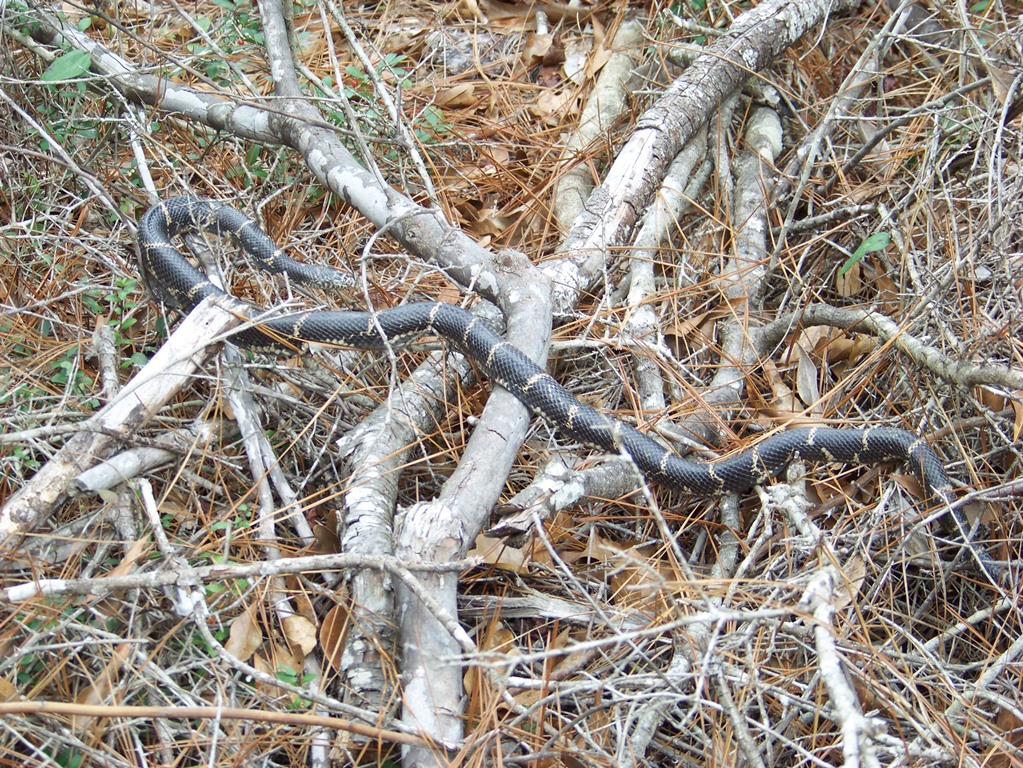
The high percentage of large snake encounters makes sense because they are – well… large and easier to see. The explanation for the high percentage of venomous snake encounters is numbers. There are only four species to be found in the western panhandle. It does not take many encounters to get a high percentage.
Water snakes will be encountered only if folks are visiting local waterways and are relatively still while there. My guess is that most encounters were from basking snakes or ones swimming across a body of water in which the observer happened to be there. Most snakes will freeze and hide when they since we are near, and most are well camouflaged. There are plenty of people who visit local waterways where these snakes exist. The lower percentage of encounters with this subgroup does not mean they are not there; they were just not seen. Many reports come from fishermen who are relatively still in their boats while fishing. If you move, they stop. If you stop, they move – and more will be seen.
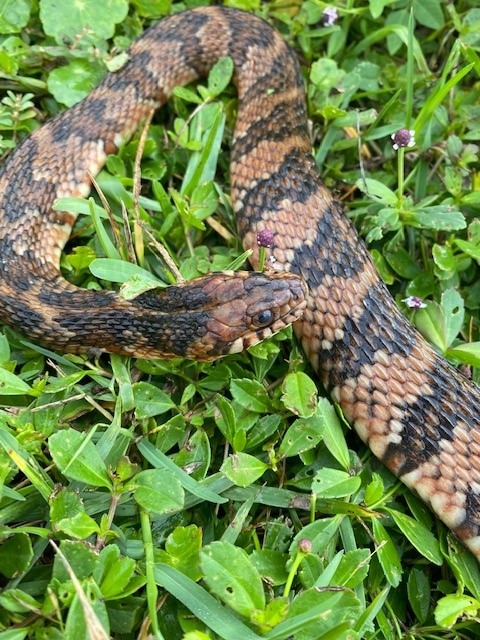
If you look at the encounters by species, we have found 17 of the 40 western panhandle species have been encountered so far (43%). There has been a total of 54 encounters. Most, 13 (24%) have been with the southern black racer. This is a common large snake that does very well in human habitats like our neighborhoods and parks. It is active during the day and is fast enough to avoid trouble so may be more willing to expose themselves than other species. They also have a preference for more open spaces where they can be seen.
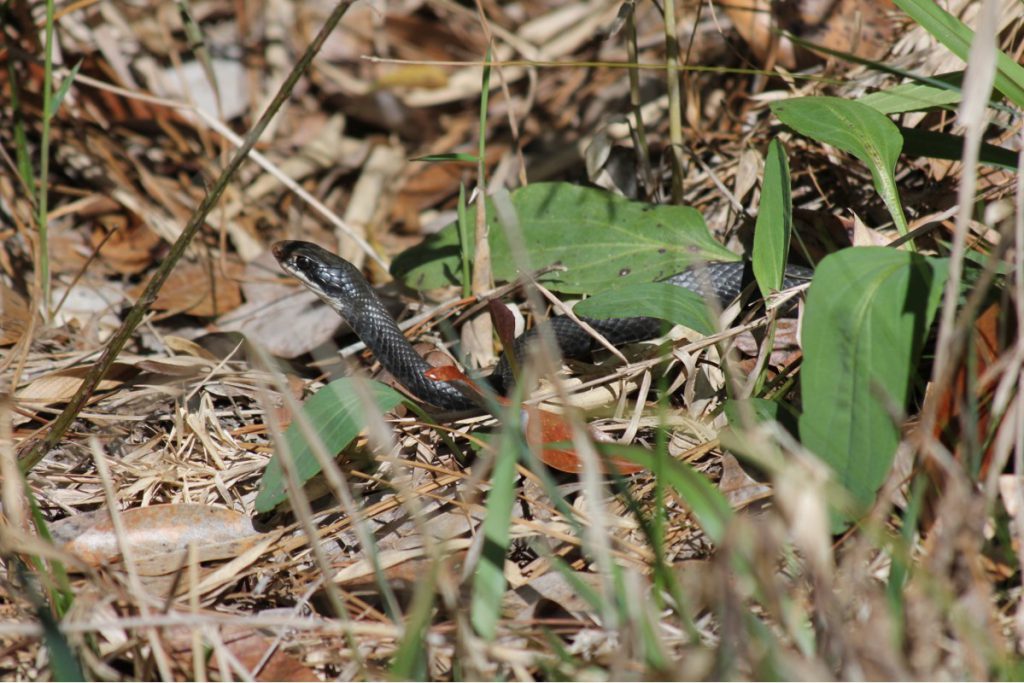
The second most frequently encountered snake so far this year has been both the eastern ribbon snake and the cottonmouth – 9 reports of both. The two account for 33% of all reports. Eastern ribbon snakes are fans of water and are often found along the edge of water bodies. With the increase in rainfall, many areas are wetter and encounters with this mid-sized snake have increased. They are most active during the day, especially on warm days, and this may also play a role in why they have been seen more often than other species.
The cottonmouth is an interesting story. Of the four species of venomous snakes, three of these have been encountered, and their encounters make up 15 of the 54 so far this year (28%). Of the 15 encounters, 9 were cottonmouths (60% of the venomous snake encounters, and 17% of all snake encounters reported). It is a commonly encountered snake. Seeing the cottonmouth as one of the top three encountered snakes in our area makes some people nervous. Like some of the other commonly encountered snakes, they like water – and there is plenty of it in the western panhandle. They prefer quiet water locations such as ponds, swamps, and lakes. They frequent water holes on golf courses and retention ponds in neighborhoods. It is also obvious that new developments are going up closer to wetlands than they did in the past – which would increase your chances of encounters. I recently completed a three-year survey of a gated community on Perdido Key where encounter rates were high. The interesting thing here is that barrier islands have little freshwater and are not classic cottonmouth habitat. But for decades there have seen an increase in encounters, which prompted many studies on how they are surviving. There are certainly natural freshwater systems on both Perdido Key and Santa Rosa Islands, but we have also created such habitats as well. It is possible that the cottonmouth is better suited to exploit these island habitats than other species of water snakes and thus are encountered more often. I plan to do more surveys for this, and other water snakes, on our islands beginning in 2023 and will let everyone know what we discover.
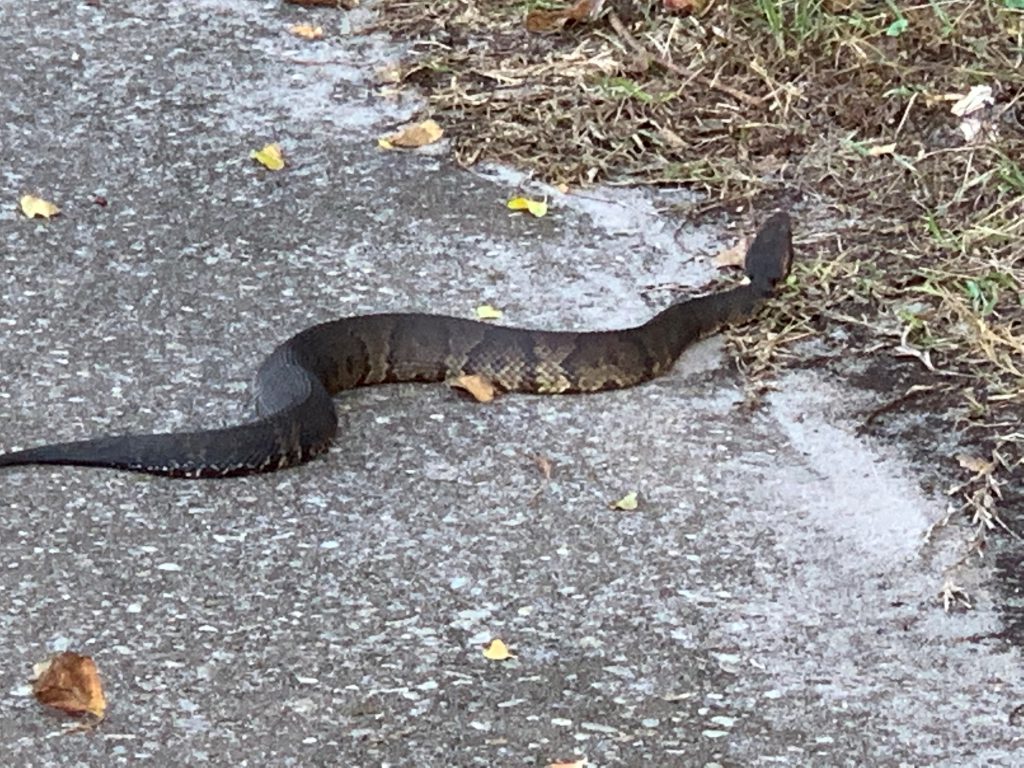
So, what has triggered the recent increase in home invasion and other snake encounters?
A week or two ago we experienced massive amounts of rainfall when a frontal system passed over. You might remember the flooding that occurred in Dallas TX and Jackson MS. That same system passed over us and generated a lot of rainfall. Like many animals, when water levels are up, they seek higher ground. During such events snakes are often reported in garages, porches, even in walls of homes. People were telling me they were finding them in the bathrooms, hallways, and even in the cushions of their couches. All of those reported were non-venomous, but cottonmouths are often encountered during these flooding events as well.
Other encounters can be explained as they were in the spring – the weather is changing. You may have noticed the recent decrease in humidity as a front passed over. It is not cold yet, but the lower humidity is signaling the oncoming fall season – and the snakes’ sense this as well. 15 of the 40 species (38%) in the western panhandle have a fall breeding season in addition to the spring one. All of the pit vipers breed in the fall and the rattlesnakes prefer fall breeding to spring. With the oncoming of the fall, males will be out seeking females. And as we mentioned earlier, hormones will force you to move more in the open than they may typically do.
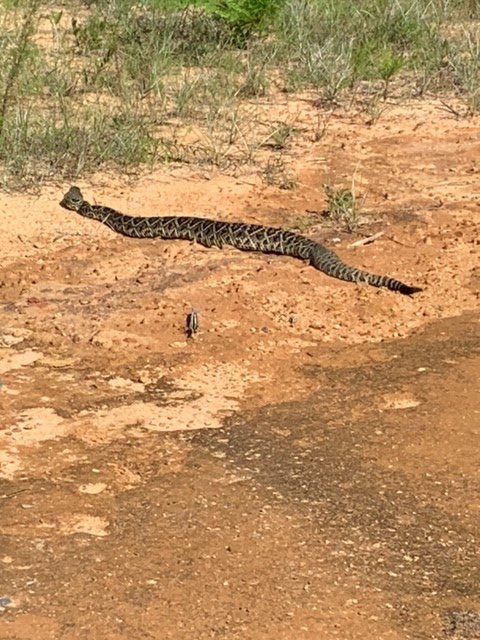
We will continue our snake watch for the rest of the year and will give an update early in 2023. If you do see a snake, please let us know which species and which month you encountered it. If you have questions about snake encounters and snake safety, do not hesitate to contact your county extension office.
- Rattlesnakes on Our Barrier Islands; Part 3 – Envenomation - December 22, 2025
- St. Joe Red Tide Claiming Terrapins - December 15, 2025
- The 2025 Snake Watch Report for the Pensacola Bay Area - December 15, 2025
